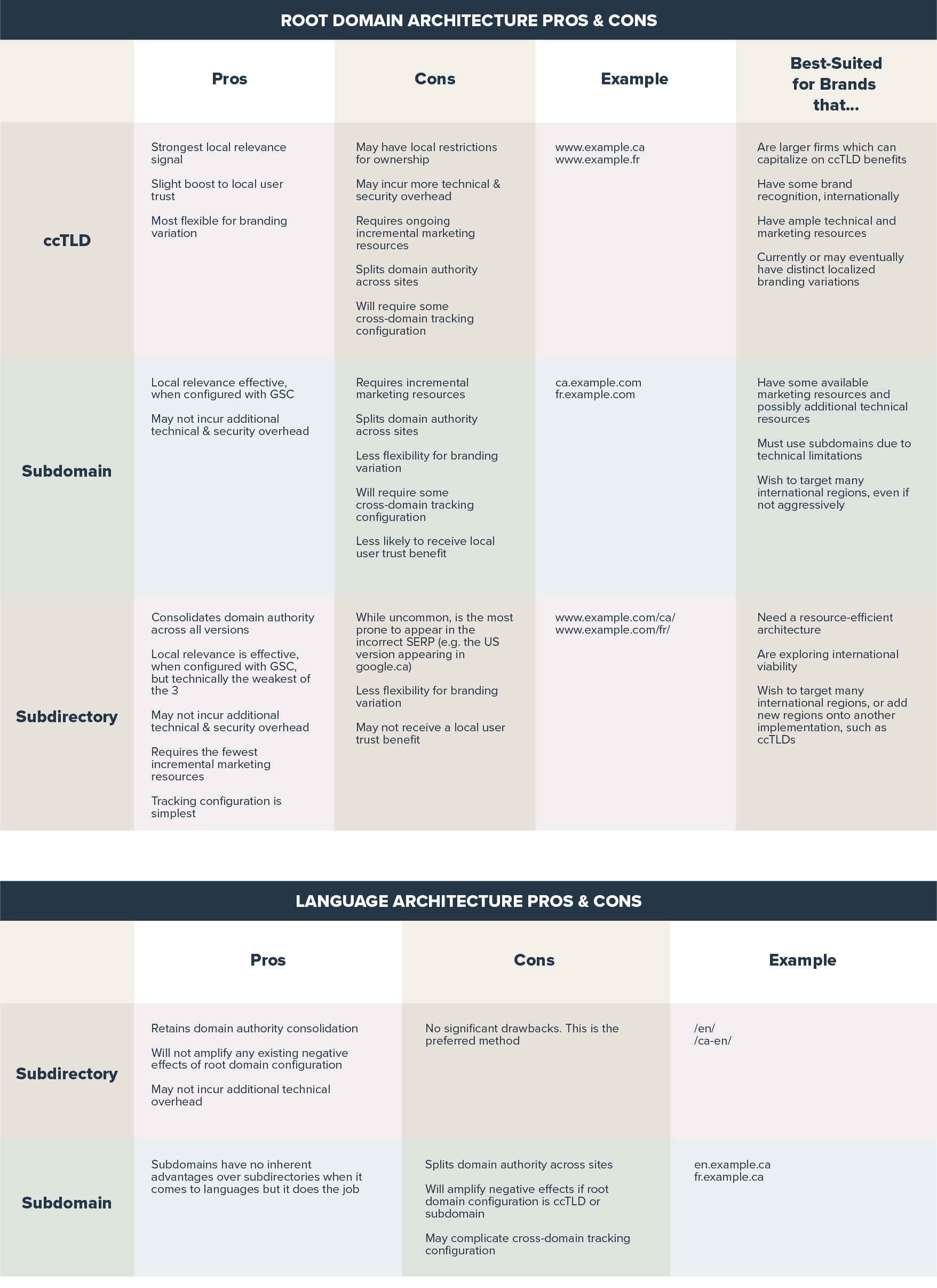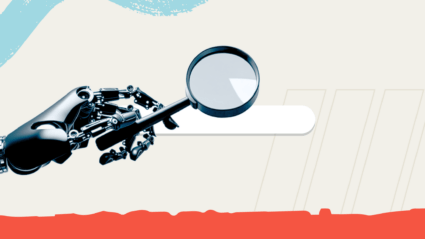Global brands face specific challenges when it comes to serving customers at an international scale. One of the most important decisions facing those brands when it comes to international SEO? How to organize the various regional versions of your site.
REGISTER NOW
Here’s what you need to know about international site structure to make the best possible decision for your global business.
What is international site architecture?
International site architecture refers to how a website differentiates its domain or URL structure to accommodate alternate versions of the website built for different regions. SEOs, web developers, and digital marketers generally evaluate options for international site architecture when first taking a website international, bringing independent regional sites together under the parent brand, planning an expansion, or executing a major migration. It’s a critical business decision. Your choice will impact:
- How you will convey relevance to any region
- How effectively or consistently Google will interpret that relevance
- The technical and security management overhead for those sites
- The marketing campaign resource overhead required to sustain each site
- How much flexibility the brand will have in customizing each site’s branding
Site architecture at its core helps users and search engines easily find what they’re looking for at any given time. That’s why developing an international site architecture plan will ensure that users and search engines can not only find what they’re looking for at any given time, but also at any given location.
Let’s take a look at your options when it comes to international site architecture, the pros and cons of each type, and which structure works best for your website and international SEO goals.
What are the different types of international site architecture?
There are 3 common types of international site architecture that you should be familiar with. There are other ways to implement international websites (such as URL parameters), but the common types and examples described here have proven to be the most reliable:
- ccTLD (Country Code Top Level Domain): www.example.ca and www.example.fr
- Subdomain: ca.example.com and fr.example.com
- Subdirectory: www.example.com/ca/ and www.example.com/fr/
In addition to the core structure, how you choose to organize the various languages available on your site is also important. Some of the structures you may see include:
- ccTLD: www.example.ca/fr/ and www.example.ca/en/
- OR fr.example.ca and en.example.ca (not recommended)
- Subdomain: ca.example.com/fr/ and ca.example.com/en/
- OR ca-fr.example.com and ca-en.example.com (not recommended)
- Subdirectory: www.example.com/ca/fr/ and www.example.com/ca/en/
- OR www.example.com/ca-fr/ and www.example.com/ca-en/
- OR fr.example.com/ca/ and en.example.com/ca/ (not recommended)
- OR reversing the above, www.example.com/fr/ca/ and www.example.com/en/ca/ and so on. This is an option but the “standard” is leaning towards first noting region, then language.
Pros and cons of international site architectures

Which international site architecture solution should you use?
In our experience, the best of the available options for international SEO architecture are ccTLDs and subdirectories, combined with a subdirectory implementation of language variations. In practical terms, the decision often comes down to how many resources the brand is able or willing to dedicate to the effort.
With that in mind, which should you use?
Subdirectories
Subdirectories are unmatched when it comes to low overhead cost, extremely wide reach, and ability to retain consolidated domain authority. These are the best choice for most small- and medium-size brands, and even larger brands if they wish to have a large scope with high efficiency.
Subdirectories maximize marketing resource utilization by consolidating all domestic and international efforts onto the same root domain. This results in much higher domain authority, and thus improved organic visibility potential for all regions. For subdirectories, technical overhead is minimal regardless of the number of international regions being targeted, as adding an additional country/language pair is as easy as creating a new subdirectory within the platform.
ccTLDs
ccTLDs are the most effective option if your international SEO goals are focused on local relevance, user trust, and brand flexibility that may be valuable perhaps now, 5, or even 10 years down the road. These might be the best choice for large, complex brands that have substantial technical and marketing resources. While this implementation has the drawback of splitting domain authority across multiple sites, that gap can be overcome by additional dedicated marketing resources and a highly localized approach for the international campaigns.
For example, a large brand could establish North America, Western Europe, and East Asia regions under their own primary ccTLDs:
- example.com for the US HQ – note that the root domain name could be distinct from the others, reflecting a difference in branding.
- example2.co.uk for the Europe HQ
- example3.jp for the Asia HQ
These sites could each be highly localized, featuring unique branding and design for that region, including the ability to group languages that are read right-to-left (like Arabic) or could be read vertically (like Chinese). This structure can then be expanded easily and efficiently by building subdirectories onto the primary regional ccTLD. The additional subdirectories could help the business retain regional trust while still allowing the brand to reach additional countries within that region:
- example.com/ca/en/ and example.com/mx/es/ for Canada and Mexico
- example2.co.uk/fr/fr/ and example2.co.uk/de/de/ for France and Germany
- example3.jp/cn/zw/ and example3.jp/tw/zw/ for China and Taiwan
The right answer when it comes to choosing an international site architecture option depends on your specific business and international SEO needs. While ccTLDs may be a great long-term solution for advanced and complex brands, they may also accumulate opportunity loss if there are insufficient resources to take advantage of them in the near future. A subdirectory-based international architecture is very efficient and effective, and is used by brands of all sizes. Remember that as a brand’s needs and capabilities change, a managed SEO migration can help retain the accumulated equity of any site architecture as it’s transitioned to a model that fits the new situation.







Responses